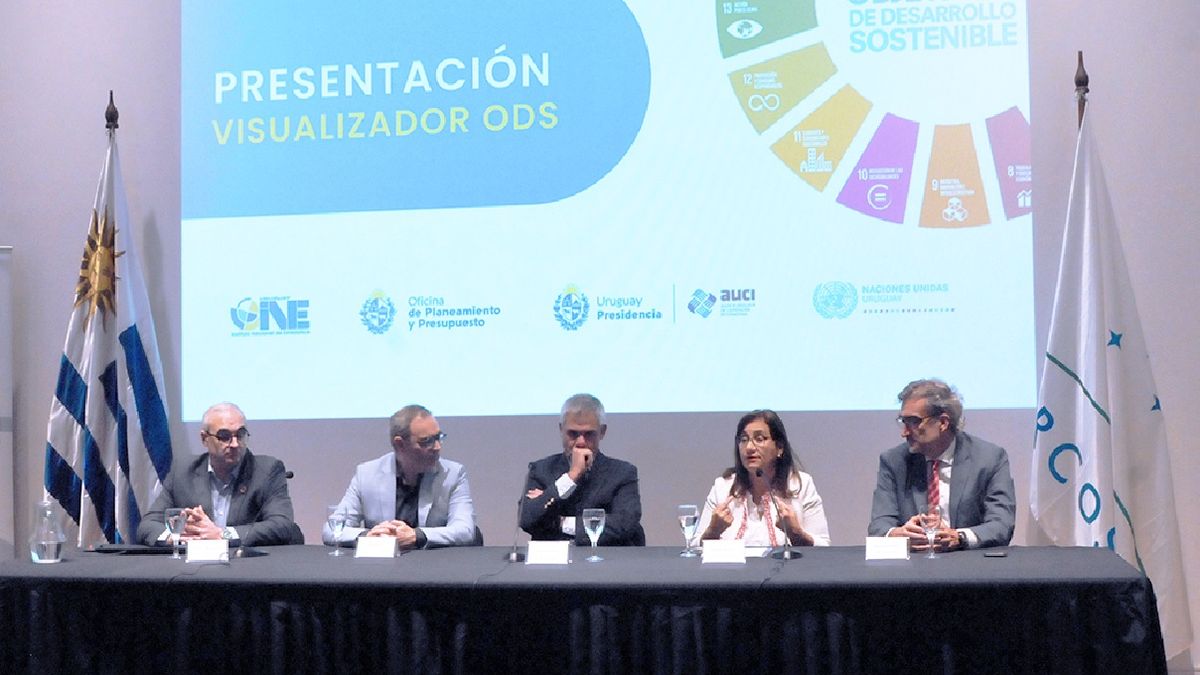He National Institute of Statistics (INE) presented the Sustainable Development Goals (SDG) Viewer), whose main task is to centralize information with the objective of facilitating decision-making by the national government and public institutions, based on the monitoring of the 17 global goals proposed by the United Nations in its Agenda 2030.
The visualizer presented is a collective work in pursuit of monitoring and transparency of the millennium development goals, explained the director of the INE, Diego Aboal. The leader appreciated that Uruguay It has stood out internationally for the presentation of reports: five since 2017.
The study reports the monitoring of the 250 global indicators to monitor the 17 global goals, with some 320 graphs and more than 1,000 variables, he specified. “The goal of data representation is to facilitate quick and clear understanding,” Aboal told Ambit.
For your part Horacio Bafico of the Office of Planning and Budget (OPP) expressed that the SDGs are a commitment assumed by the Uruguay long-term. “It is very difficult to show all the progress in a voluntary report, but these displays are a practical way to show all the variables so that we can follow them,” he said.
Aboal exemplified: “there is relevant information about the participation of women in political spheres. There is the proportion of women who are councilors in each department of the country. So I think it is important and we are very happy to have achieved this after two years of work with the support of the United Nations, and it is a joint effort, in addition, with the Office of Budget Planning and the Uruguayan Agency for International Cooperation”.
The device presented was created as a consequence of the 2030 Agenda approved by the United Nations, which addresses issues such as sustainability and the effective communication of complex information to facilitate decision making.
The event held in the assembly hall of Executive Tower It also included the participation of the cooperation manager of the Uruguayan Agency for International Cooperation (AUCI), Claudia Romanoand the United Nations coordinator in Uruguay, Pablo Ruiz Hiebra.
Romano highlighted that publishing variables, goals and indicators allows us to account for the voluntary reports and the commitment that the entire Uruguayan State has with the 2030 agenda and the SDGs. Also having information available to all those who work in public administration and other civil society actors, in a single place in a systematized and updated manner, facilitates access and use of it.
Finally, the United Nations representative in Uruguay, Pablo Ruiz Hiebra, positioned the country as one of the most advanced in meeting the objectives. “There are almost 1,000 indicators in which Uruguay, in many of them, is doing very well. There are some in which he has more delays and in which he has to work more thoroughly, topics that are not new, such as poverty. There are some issues that have not progressed at the pace that the 2030 Agenda should, but it is an almost universal problem and a challenge to continue moving forward,” he noted.
On the other hand, the director of the National Institute of Statistics announced that in approximately two months the final results of the population census will be announced. “We publish preliminary figures, therefore there may be some adjustments in terms of the total figure we published at the end of November. It is scheduled for mid-June, this information will be available in its final format and also a viewer of this information. So it’s also going to be very friendly to explore various demographics,” Aboal added.
Source: Ambito




